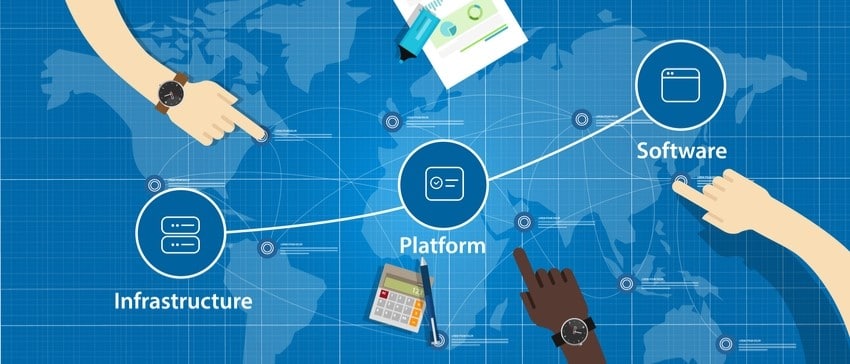The evolving role of procurement shows that the function is gaining more attention and credibility among stakeholders and businesses alike. With this comes greater responsibility and procurement challenges. With procurement’s changing role, cost-saving targets will not disappear but will be achieved accordingly.
It’s with no doubt that procurement’s value is achieved by working on projects that deliver additional value beyond financial and monetary benefits. In January 2021, more than 100 CASME members participated in a poll aimed to determine the changing trends facing procurement.
The poll showed a consistent pattern in response from procurement teams based in different geographical regions and working in various industries and sectors. The results proved that similar challenges affect varying industries and organizations.
The most common challenges facing procurement include:
1. Pandemic initiatives
Procurement has gained more credibility because of how it has managed sourcing, suppliers, stakeholders, and supply chain processes during and after the pandemic. It’s now time to revisit category strategies and update them accordingly to reflect the changes that have transpired since the pandemic.
2. Risk management
The pandemic has highlighted and signaled the inefficiencies of previous risk management practices. The focus now needs to shift to a broader scope of risk. The top procurement challenges include:
- Issues that may cause reputational damage
- Financial stability of critical, high-spend suppliers
- GDPR breaches and other protection and security policies
- Bribery and corruption
- Supply chain certainty
3. Poor supply chain transparency
Lack of supply chain visibility is a leading procurement challenge. Visibility across the supply chain is a critical tool for meeting regulatory compliance and mitigating risks. According to the 2018 Deloitte Global Report, 65% of procurement professionals have no visibility beyond their top-tier vendors. Using technology can help these professionals improve visibility across their procurement funnel, reduce costs – while achieving a robust 360-degree view across supply chain networks.
In addition, the use of software like ProcurePort provides track-to-trace solutions and improved visibility of supply chain processes. This means that supply chain management can easily be updated with a click of a button, and in real-time. Workflows are added automatically of urgent reorders and contingencies for critical shortages. With automated procurement solutions, supplier contracts are reviewed with legally-reviewed clauses and approved.
4. Sustainability
Sustainability concerns have evolved into an emerging global interest in issues of social, economic, and corporate governance SGC. The top sustainability challenges in procurement include:
- Ethical and sustainable sourcing
- Human capital practices like slavery and child labor
- Prevention of corruption and bribery
- Reduction of carbon (IV) emissions
- Reduction of energy and water use
5. Diversity
Diversity has been an issue of strategic priority to the United States. But more recently, it’s gaining its way into the agenda of APAC and European regions. Procurement supports diversity by opening up multiple opportunities for suppliers to compete for contracts. That encourages business innovation. The current challenge is identifying the suppliers who meet the diversity threshold or criteria, especially when there’s no mandatory policy for suppliers to meet certain diversity statuses to qualify for contracts.
6. Innovation
The evolving nature of things, including epidemics and new developments in outsourcing and supply chains, has forced organizations to be more innovative than ever before. By building relationships with suppliers, procurement has a unique external role to tease out innovation. Some organizations have begun developing a reduced or “lite” version of their terms and conditions. This lite version is suitable for encouraging start-up suppliers in the market. To embed innovation in the procurement function, actions can be spearheaded in the following four areas:
- Early market engagement with actions that are honest, transparent, and fair – and clear information about how to manage communication, information, and intellectual property.
- Organizational alignment throughout the procurement cycle.
- Early supplier engagement at the sourcing stage, building on the information gained from earlier market engagement activities.
- Innovation support activities: inducement and rewards, pilot projects, risk sharing, briefings, and unsolicited proposals.
7. Digitization projects
After building business credibility during this pandemic, this is a great time to prioritize investment in tools and systems that improve operational efficiency. To achieve this, organizations are investing in the following areas:
- Cloud-based applications
- Systems that sit on top of a company’s ERP platforms to cover supplier relationship management, risks, and other procurement-related activities.
- Data visualization tools
- Robotic process automation
- Catalog to manage tail spend
Procurement’s Changing Role
Purchasing is considered an essential part of any enterprise. Indeed, it’s becoming an integral component for the stability and economic health of businesses. The main focus of purchasing is to arrange and maintain a supply of necessary materials, resources, and services at competitive rates. The purchase function undertakes a series of activities including inviting bids, supplier selection, placing orders, and expediting supplies.
Looking at the role of procurement, it has evolved based on the following indicators:
- Increased need for supply chain visibility to foster integrity, transparency, and accountability
- A pressing need for cloud solutions to optimize supply chain planning and management activities
- A pressing need for data analytics solutions to collect, collate, and make informed data-driven decisions
- The rising need for automation solutions to automate mundane procurement tasks: inquiries, billing, and requisitions
ProcurePort – Your Leading Procurement Partner
Procurement is increasingly becoming a critical function of an enterprise’s strategy to reduce costs and increase operational efficiency. The procurement department is responsible for contract management, supplier vetting, and selection faces a variety of challenges daily.
That is why technology providers like ProcurePort have emerged to provide procurement solutions. ProcurePort lets you simplify your procurement processes from beginning to end while achieving cost savings, efficiency, and overall productivity. Contact ProcurePort to learn how to embed automation and efficiency in your procurement function.










